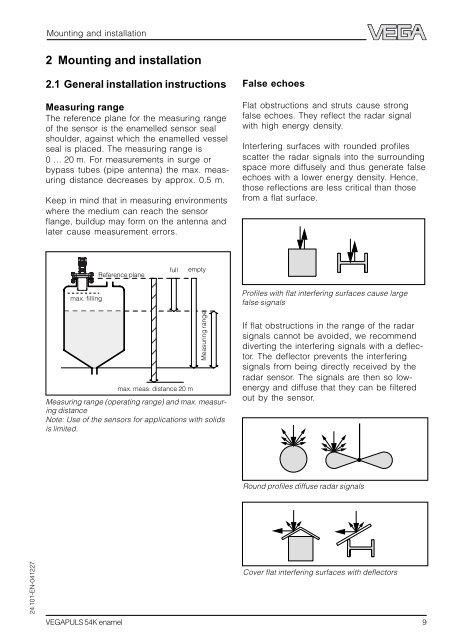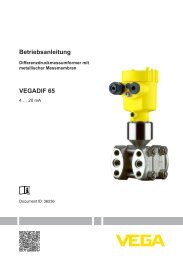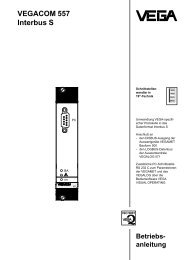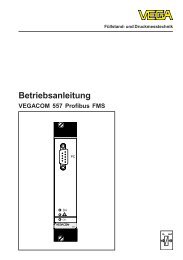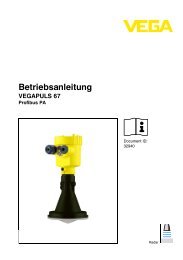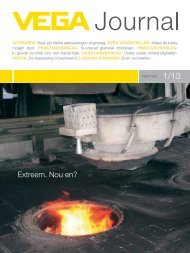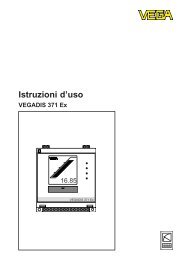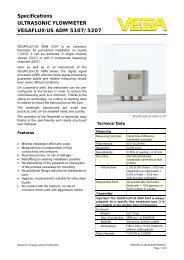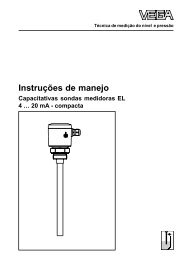Operating Instructions - VEGAPULS 54K enamel
Operating Instructions - VEGAPULS 54K enamel
Operating Instructions - VEGAPULS 54K enamel
Create successful ePaper yourself
Turn your PDF publications into a flip-book with our unique Google optimized e-Paper software.
24 101-EN-041227<br />
Mounting and installation<br />
2 Mounting and installation<br />
2.1 General installation instructions<br />
Measuring range<br />
The reference plane for the measuring range<br />
of the sensor is the <strong>enamel</strong>led sensor seal<br />
shoulder, against which the <strong>enamel</strong>led vessel<br />
seal is placed. The measuring range is<br />
0 … 20 m. For measurements in surge or<br />
bypass tubes (pipe antenna) the max. measuring<br />
distance decreases by approx. 0.5 m.<br />
Keep in mind that in measuring environments<br />
where the medium can reach the sensor<br />
flange, buildup may form on the antenna and<br />
later cause measurement errors.<br />
max. filling<br />
Reference plane<br />
full empty<br />
max. meas. distance 20 m<br />
Measuring range (operating range) and max. measuring<br />
distance<br />
Note: Use of the sensors for applications with solids<br />
is limited.<br />
Measuring range<br />
False echoes<br />
Flat obstructions and struts cause strong<br />
false echoes. They reflect the radar signal<br />
with high energy density.<br />
Interfering surfaces with rounded profiles<br />
scatter the radar signals into the surrounding<br />
space more diffusely and thus generate false<br />
echoes with a lower energy density. Hence,<br />
those reflections are less critical than those<br />
from a flat surface.<br />
Profiles with flat interfering surfaces cause large<br />
false signals<br />
If flat obstructions in the range of the radar<br />
signals cannot be avoided, we recommend<br />
diverting the interfering signals with a deflector.<br />
The deflector prevents the interfering<br />
signals from being directly received by the<br />
radar sensor. The signals are then so lowenergy<br />
and diffuse that they can be filtered<br />
out by the sensor.<br />
Round profiles diffuse radar signals<br />
Cover flat interfering surfaces with deflectors<br />
<strong>VEGAPULS</strong> <strong>54K</strong> <strong>enamel</strong> 9


